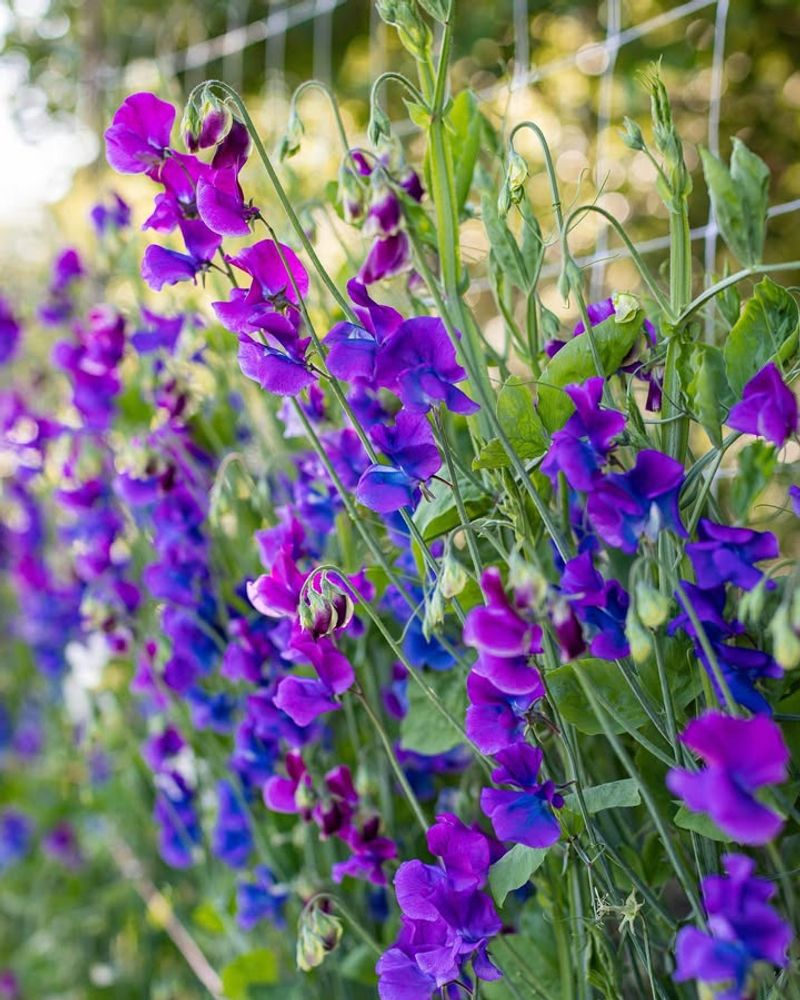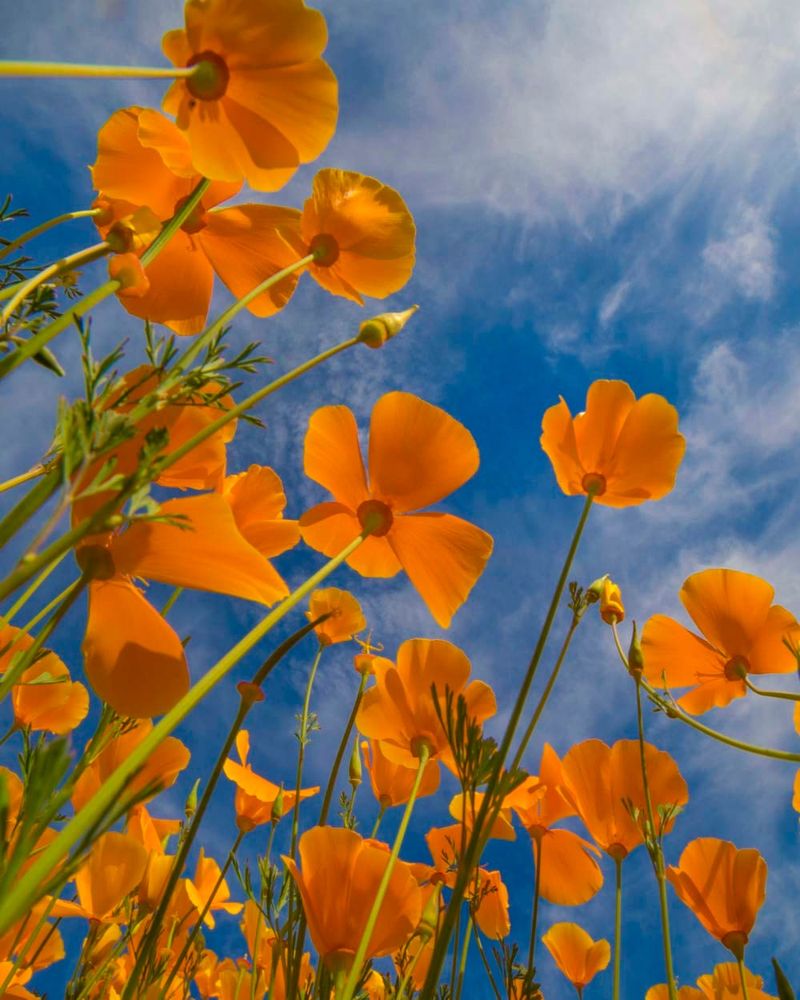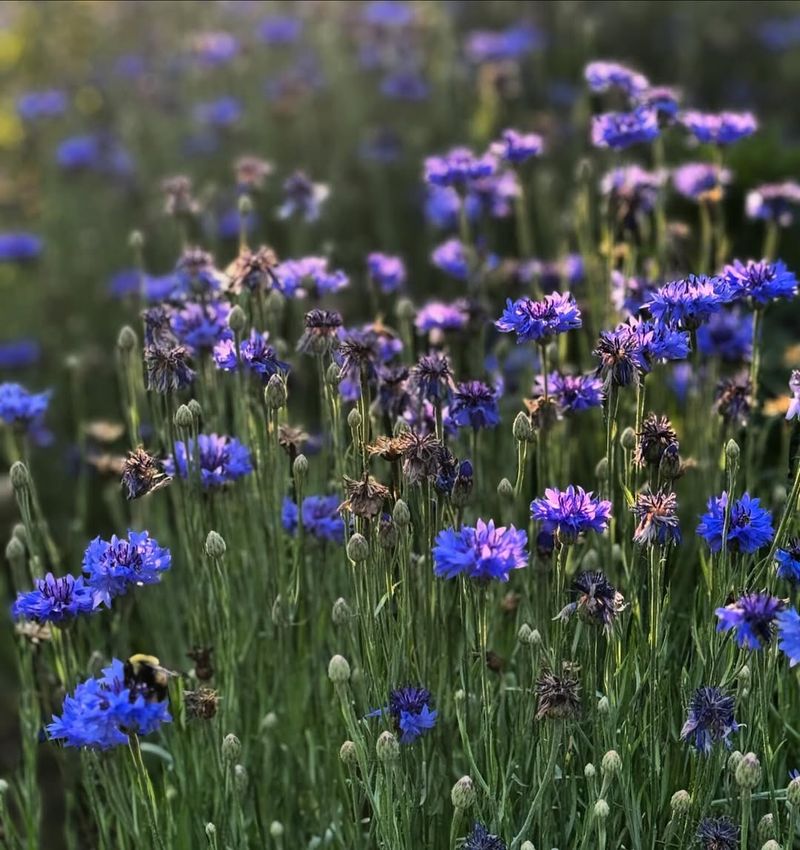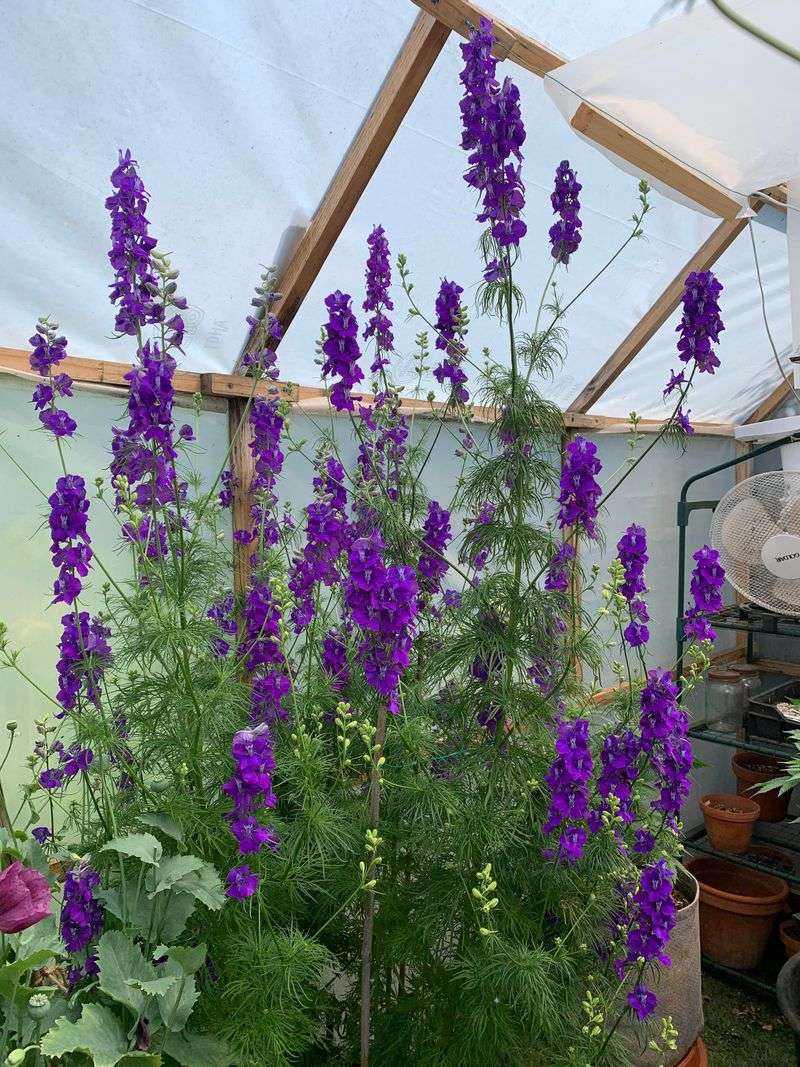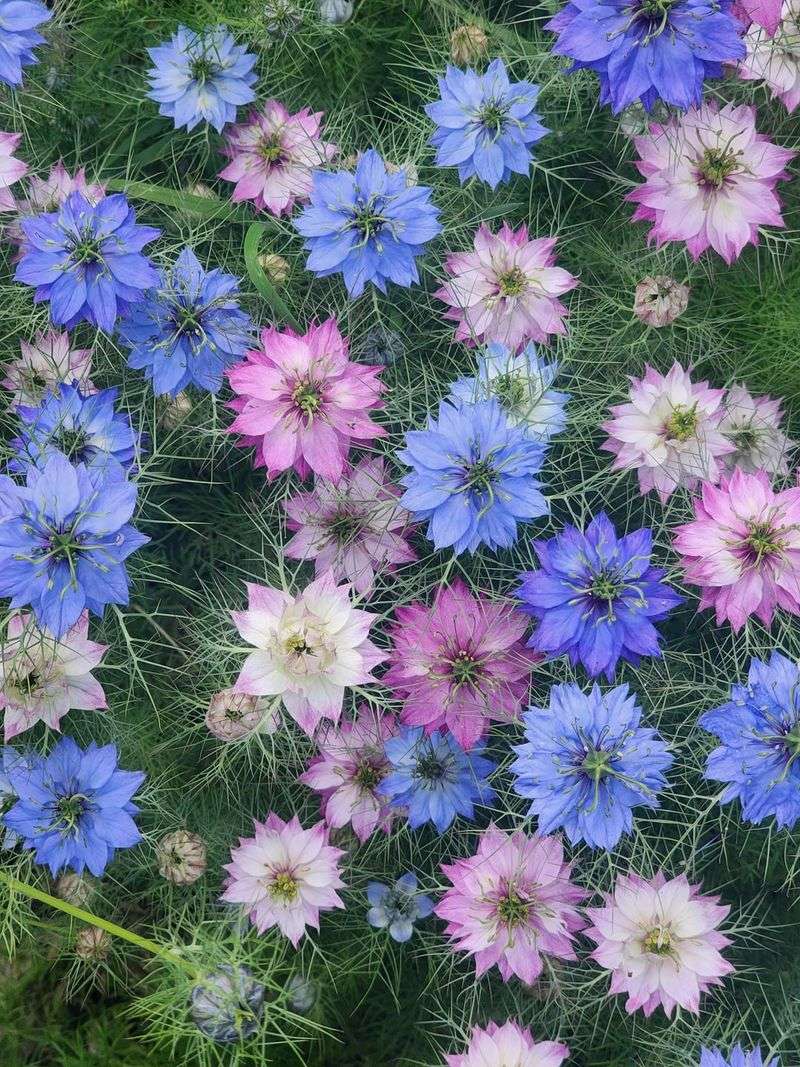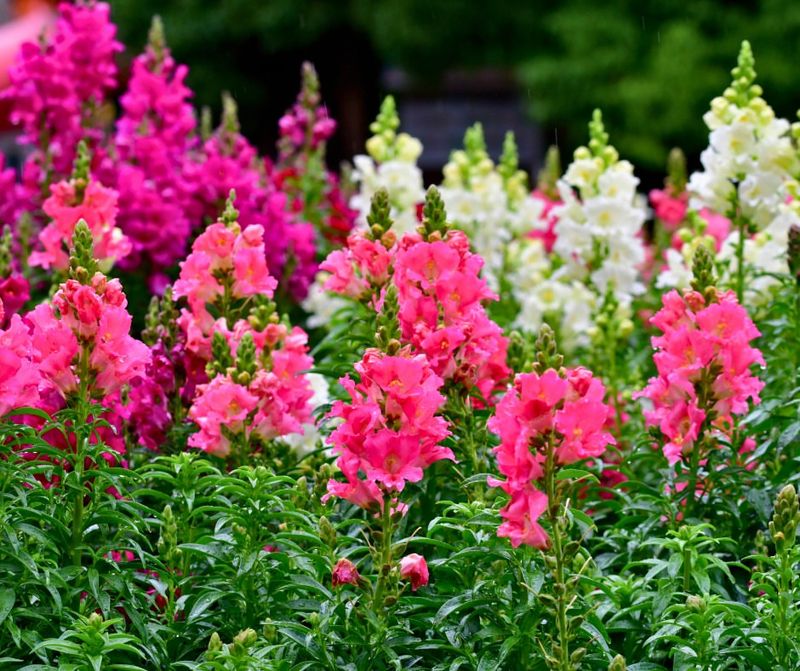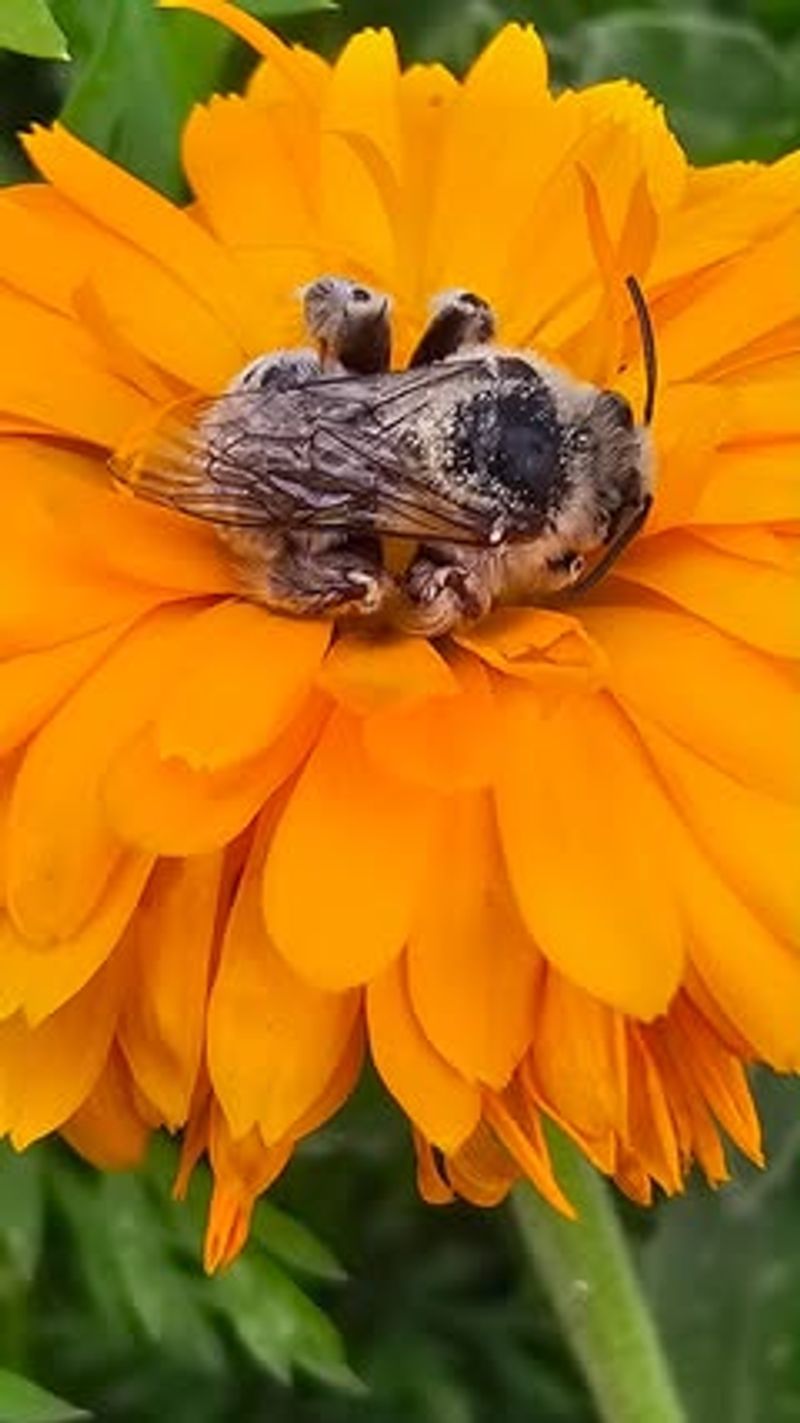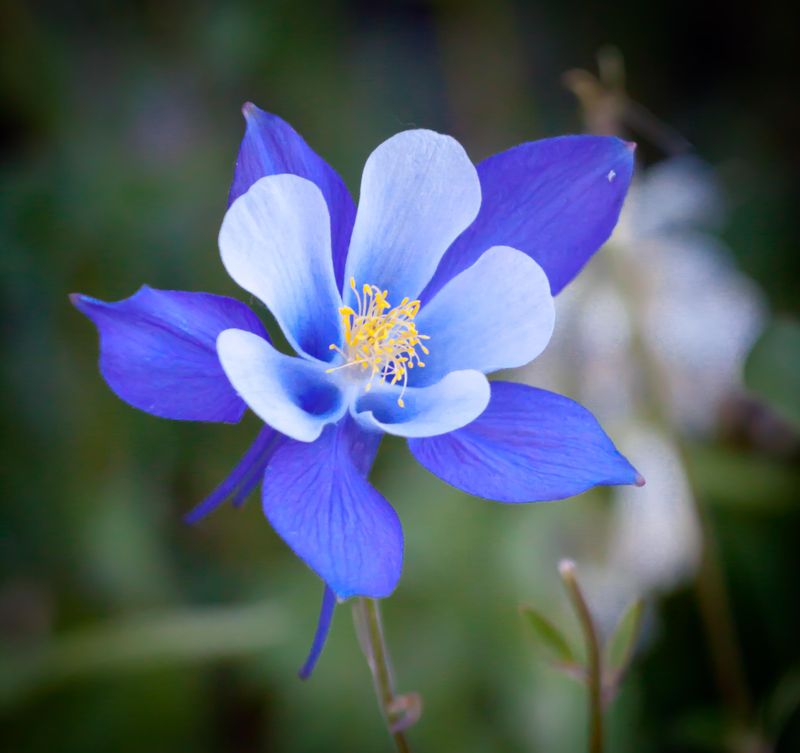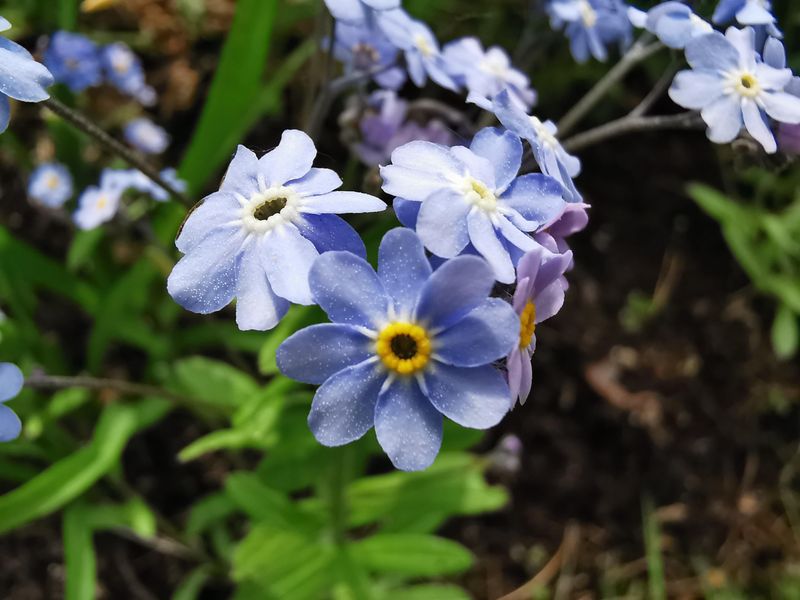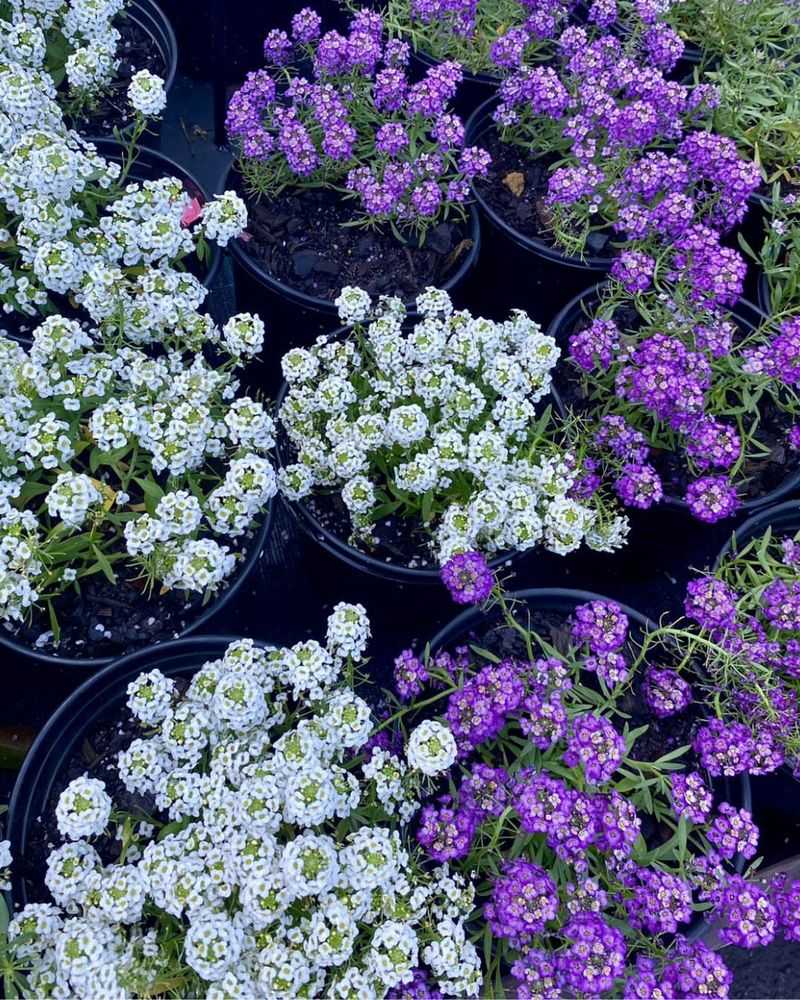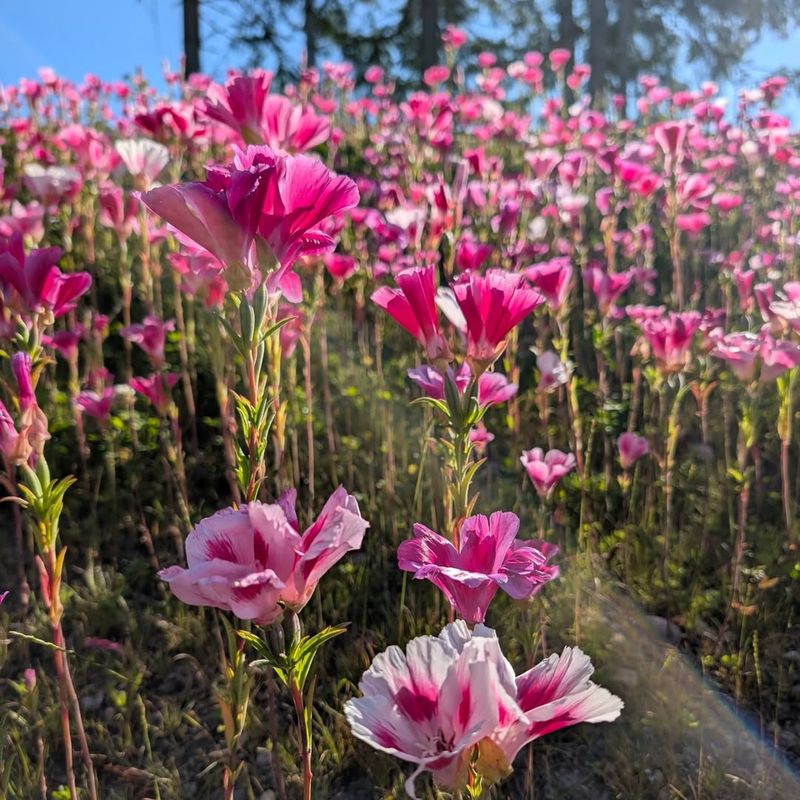Even in November, it’s possible to get a jumpstart on your Oregon garden. I’ve planted a few seeds late in the season and been amazed by the early blooms that followed.
Choosing the right varieties makes it simple to stay ahead. By planting now, your garden will be ready to shine come spring.
1. Sweet Peas
Sweet peas are absolute champions when it comes to cold-weather planting in Oregon. Their fragrant blooms come in every color imaginable, from soft pastels to deep purples.
Plant them about an inch deep in well-drained soil, and they’ll germinate slowly through winter. By spring, you’ll have climbing vines covered in delicate flowers that smell absolutely amazing.
Oregon gardeners love these because they handle our wet winters beautifully and reward you with months of cutting flowers for bouquets.
2. California Poppies
Bright and cheerful, California poppies bring sunshine to Oregon gardens even on cloudy days. These tough little flowers actually prefer being planted in fall because they need cold temperatures to germinate properly.
Scatter the tiny seeds over bare soil and barely cover them. They’re drought-tolerant once established, which makes them perfect for low-maintenance areas.
Oregon’s mild winters won’t harm them at all, and come spring, you’ll have golden-orange blooms dancing in the breeze.
3. Bachelor’s Buttons
With their striking blue petals and old-fashioned charm, bachelor’s buttons are gardening favorites across Oregon. November planting gives these hardy annuals a head start on spring growth.
They’re incredibly easy to grow from seed and tolerate our rainy Pacific Northwest winters without complaint. Just sprinkle seeds where you want them and let nature do the work.
Butterflies absolutely adore these flowers, so you’ll be supporting local pollinators while adding vibrant color to your landscape.
4. Larkspur
Larkspur towers above other flowers with elegant spires that reach for the sky. Oregon’s cool, moist November weather creates ideal conditions for these seeds to settle in before winter.
Plant them in a sunny spot with good drainage, and don’t worry about frost damage. These beauties actually need cold exposure to bloom their best.
By late spring, you’ll have dramatic vertical interest in your garden, with hummingbirds visiting the tubular blooms regularly throughout the season.
5. Love-in-a-Mist
Love-in-a-mist sounds romantic, and these whimsical flowers definitely live up to their enchanting name. Their delicate blue or white blooms peek through feathery foliage that looks like morning mist.
Oregon gardeners find these incredibly easy to grow from November sowings. The seeds need cold stratification, which our winters provide naturally.
After flowering, they develop interesting seed pods that dry beautifully for crafts, giving you two reasons to grow them in your Pacific Northwest garden.
6. Snapdragons
Kids love squeezing snapdragon flowers to make the dragon mouths open and close. November is actually perfect timing for planting these in Oregon since they handle cold temperatures like pros.
Scatter the dust-like seeds on soil surface without covering them, as they need light to sprout. Our mild winters mean they’ll often bloom by late winter or early spring.
Available in practically every color, snapdragons add vertical interest and keep producing flowers for months if you deadhead them regularly.
7. Calendula
Calendula brings cheerful orange and yellow blooms that practically glow in Oregon’s gray winter light. Sometimes called pot marigolds, these medicinal flowers are workhorses in the garden.
Plant seeds directly in the ground this November, and they’ll germinate quickly even in cool soil. They’re completely unfazed by frost and actually prefer cooler growing conditions.
Bonus: the petals are edible and add color to salads, plus they attract beneficial insects that help your whole garden thrive naturally.
8. Columbine
Columbines look like tiny fairy bonnets bobbing on slender stems. Oregon’s native species and garden varieties both appreciate fall planting because seeds need cold, moist conditions to break dormancy.
They prefer partial shade, making them perfect for those tricky spots under trees where other flowers struggle. Plant seeds on soil surface since light helps germination.
Once established, columbines self-sow readily, creating naturalized drifts throughout your Pacific Northwest garden that return faithfully every year.
9. Forget-Me-Nots
Forget-me-nots create clouds of tiny blue flowers that seem to float above their foliage. These sentimental favorites thrive when planted in November throughout Oregon.
They love our wet winters and will naturalize happily in moist, shady areas where grass struggles to grow. Simply scatter seeds in fall and wait for spring magic.
While technically biennials, they self-seed so enthusiastically that you’ll have continuous blooms year after year, creating a cottage garden look without any effort required.
10. Alyssum
Sweet alyssum forms fragrant carpets of tiny flowers that smell like honey on warm days. November planting in Oregon gives these low-growing beauties time to establish strong roots.
They’re perfect for edging pathways or filling gaps between stepping stones. The flowers handle light frosts without damage and often bloom through winter during mild spells.
Bees go crazy for alyssum, making it an excellent choice for supporting pollinators when few other flowers are blooming in your Pacific Northwest landscape.
11. Clarkia
Clarkia brings the beauty of Pacific Northwest wildflowers right to your Oregon garden. These native beauties produce ruffled blooms in shades of pink, purple, and magenta.
Fall planting is essential because seeds require cold stratification to germinate successfully. Just broadcast seeds over prepared soil and let winter work its magic.
They’re drought-tolerant once established and attract native bees, making them environmentally friendly choices that connect your garden to the surrounding natural ecosystem beautifully.
12. Breadseed Poppies
Breadseed poppies create dramatic statements with tissue-paper petals in stunning colors. Oregon’s November weather provides exactly what these seeds need to thrive.
Plant them where you want them to stay since poppies hate being transplanted. They’ll germinate slowly through winter and explode into bloom by late spring.
After flowering, the decorative seed pods are perfect for dried arrangements, and you can harvest the edible seeds for baking, giving you multiple rewards from one simple planting.


